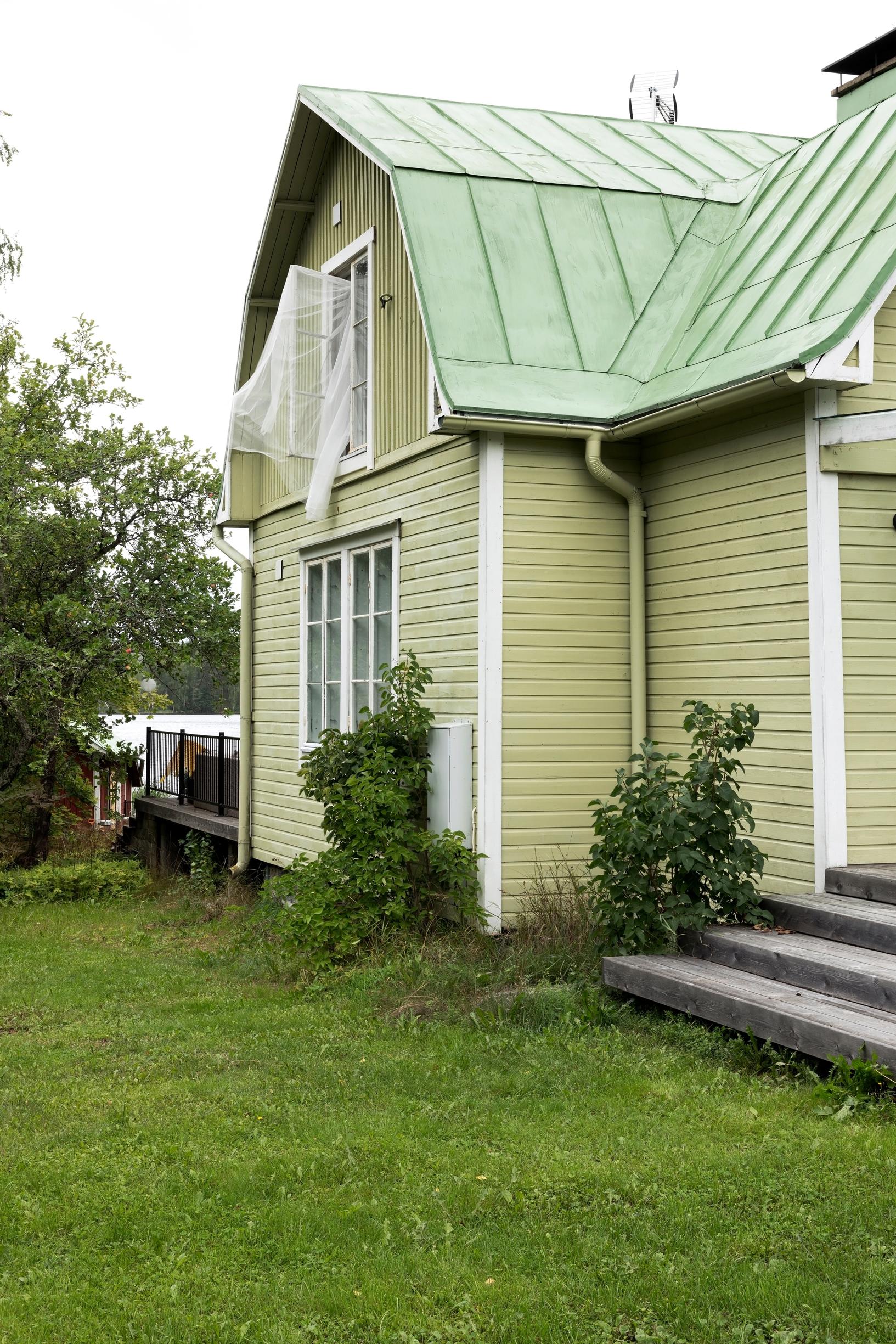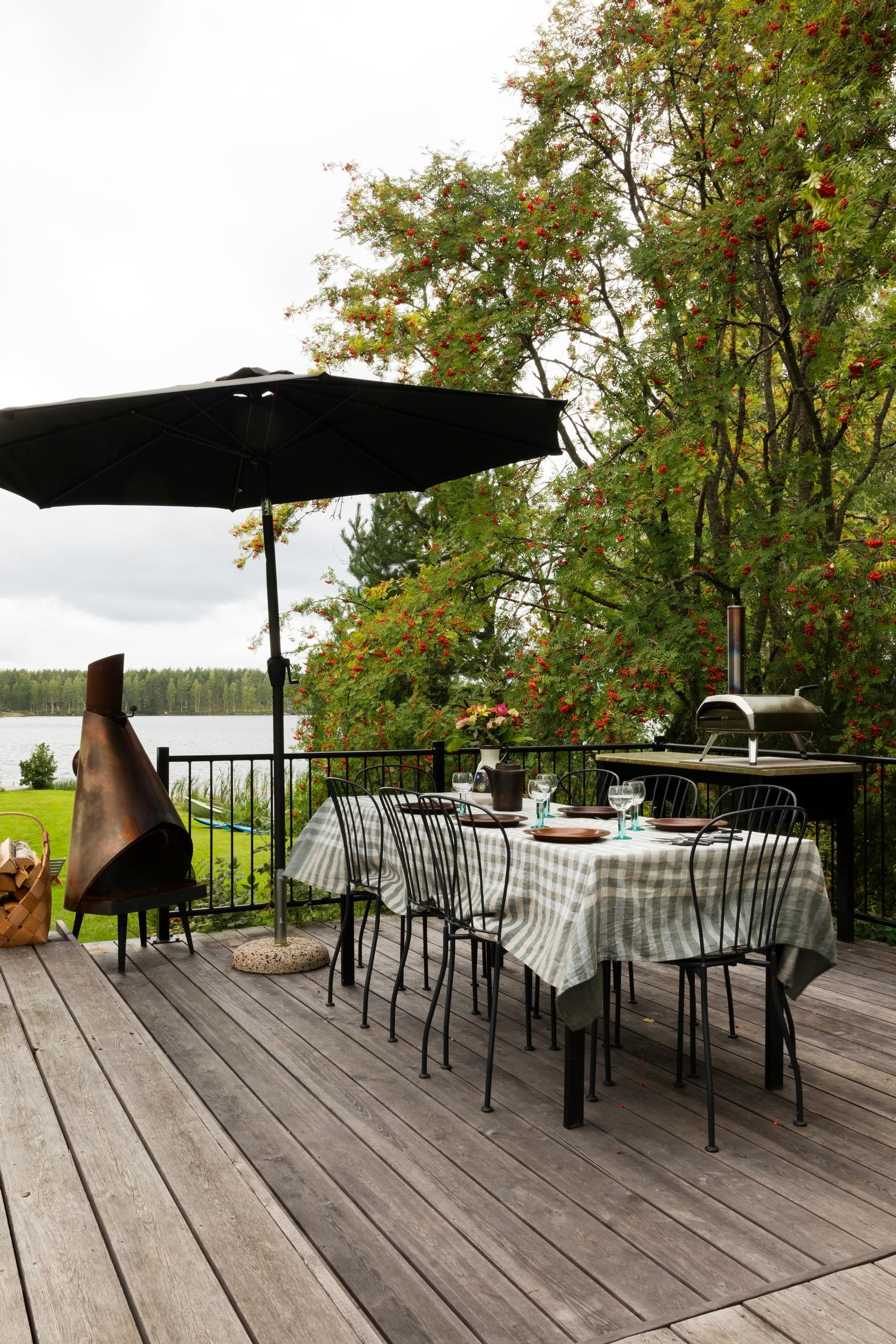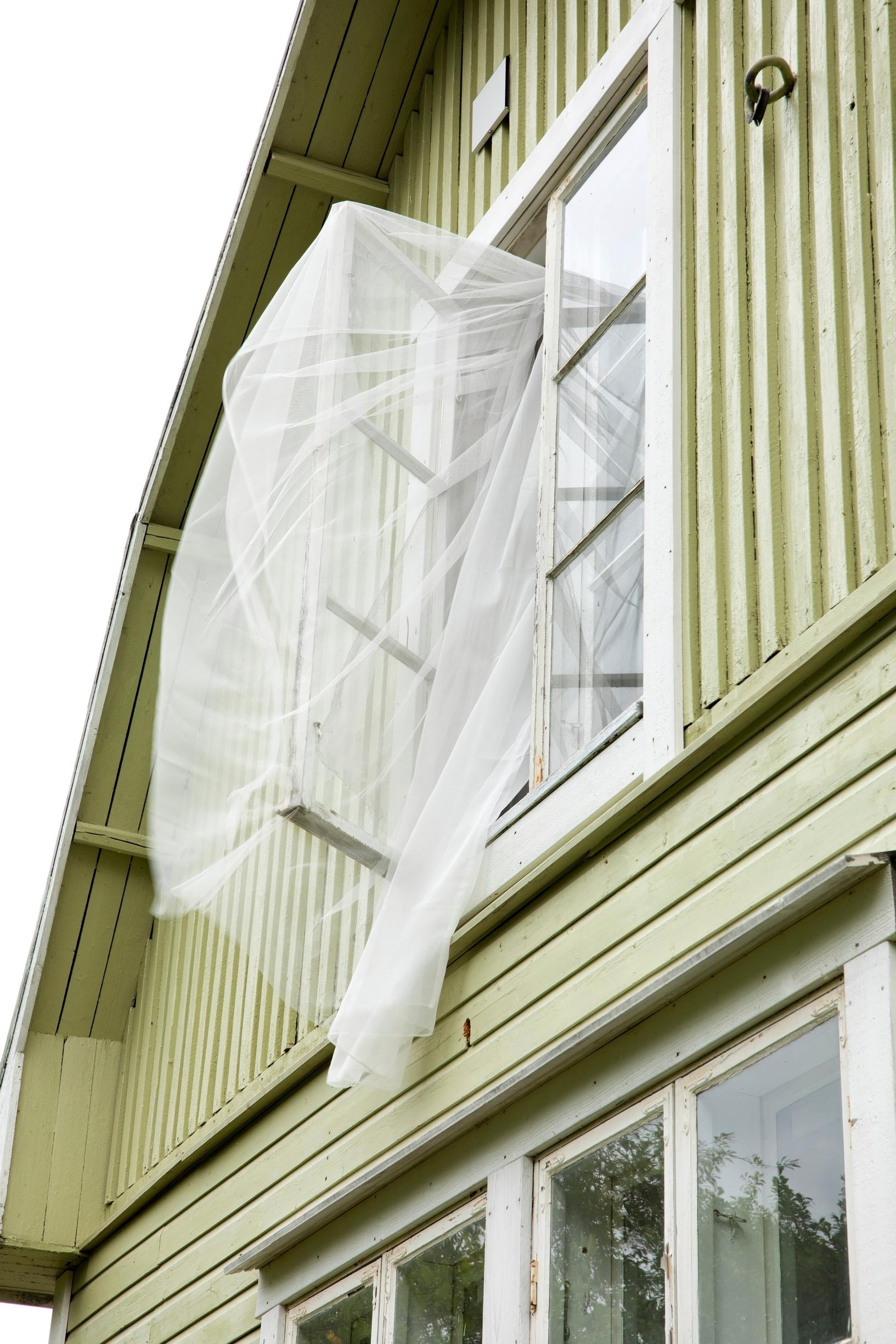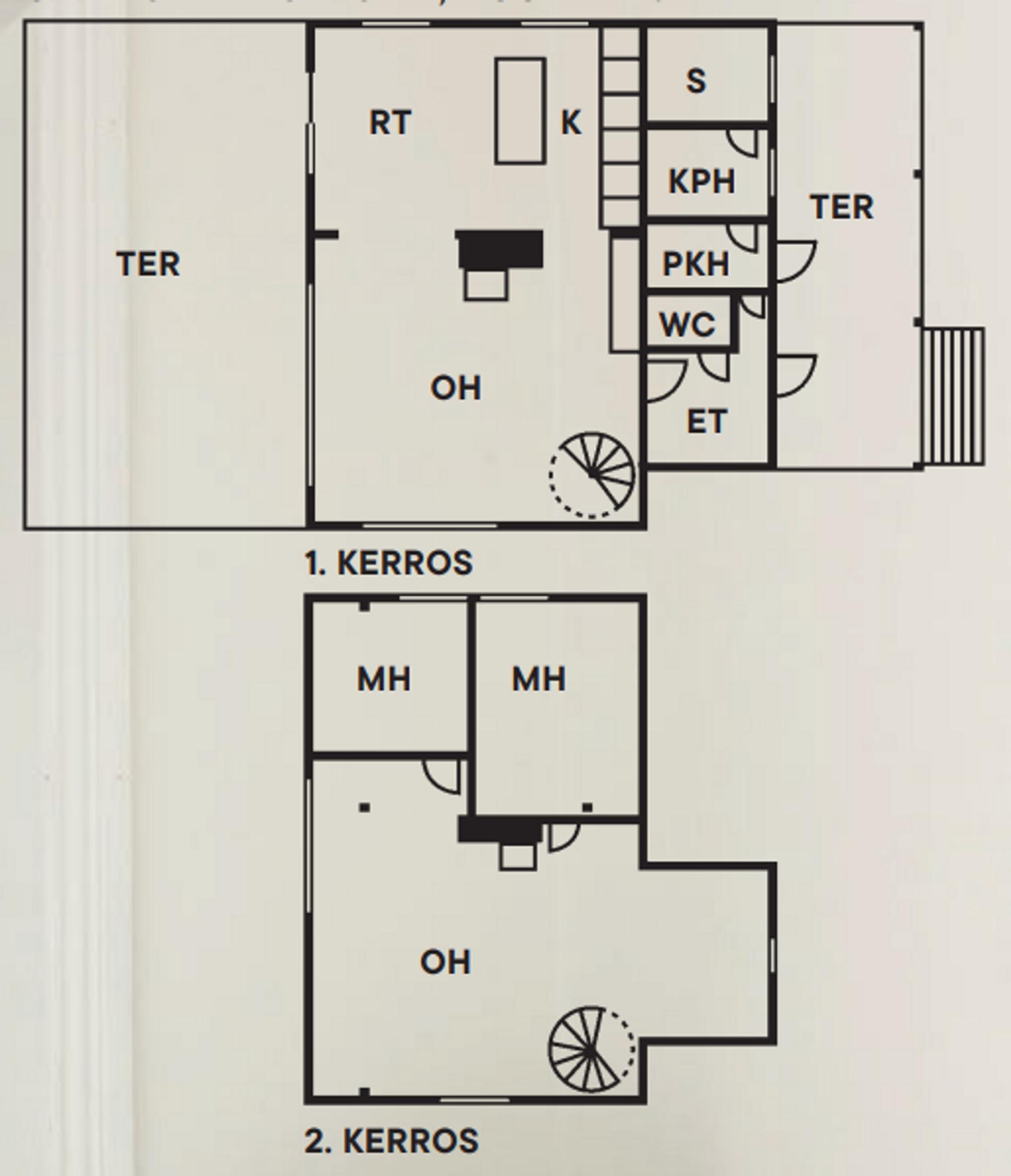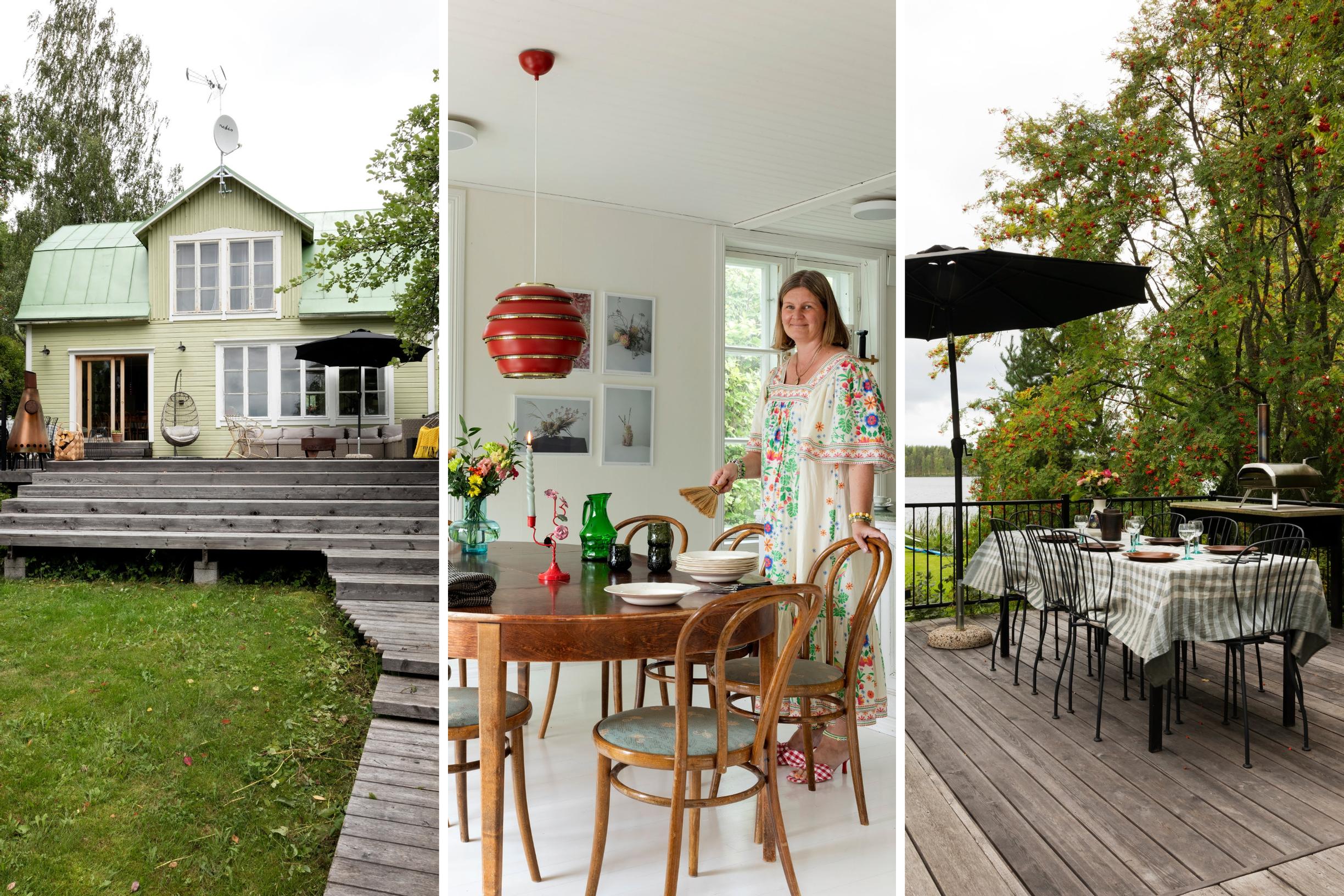
Rescued mansard-roofed villa was turned into a vacation home—“If you dream of something, do it right away”
Petra and Vesa Kunnari have a special fondness for old mansard-roofed houses. Their cottage fever was cured by a charming villa on the shores of Lake Saimaa, in a peaceful setting just close to the shops and the town market square. “When you stroll through Puumala on a summer evening, you begin to sense what happiness is.”

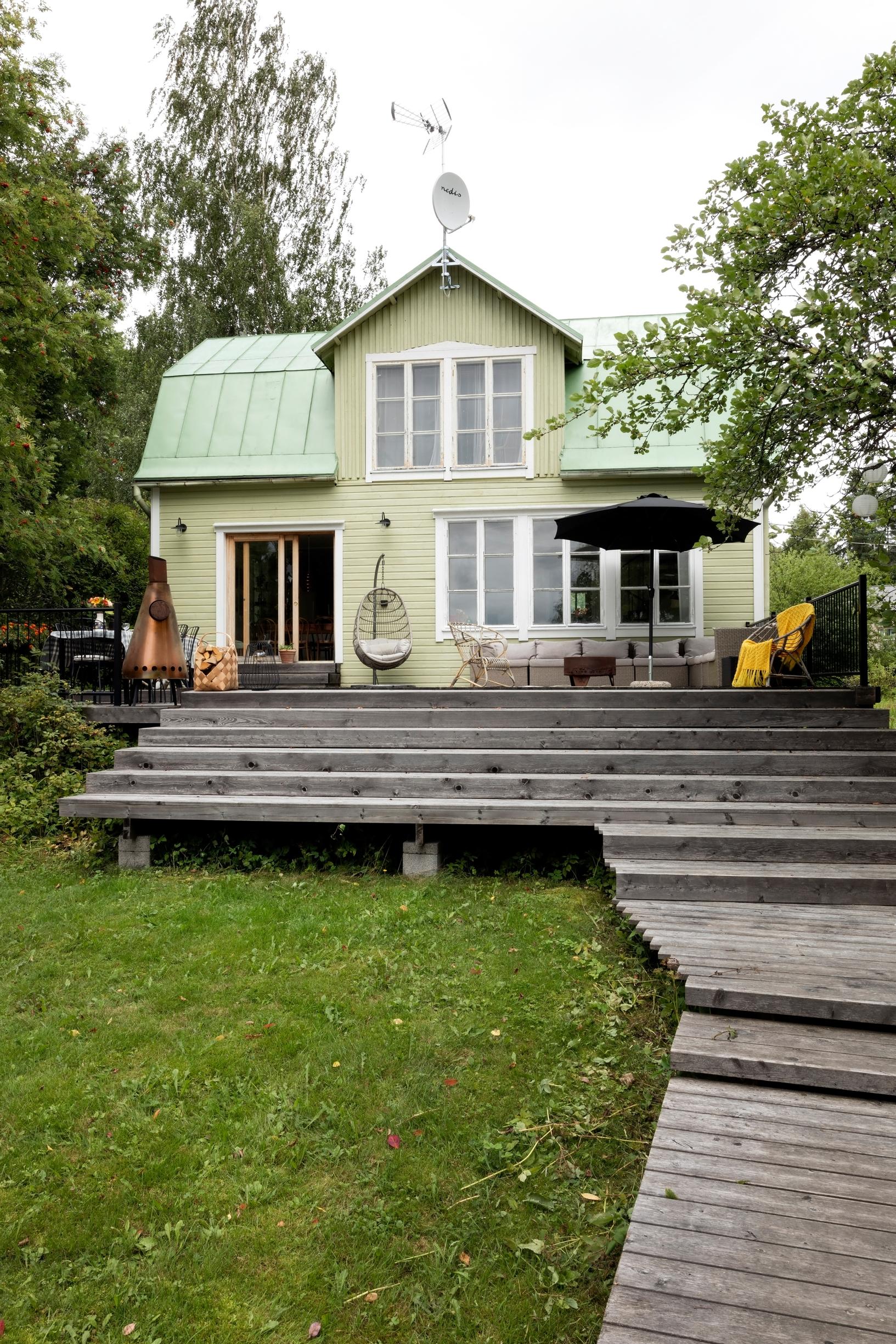
Petra and Vesa Kunnari have a fondness for old mansard-roofed houses. Both their city home in Espoo and their second home in Puumala feature mansard roofs and many details characteristic of historic villas.
Vesa had long been yearning for a summer cottage when the Puumala property happened to catch the couple’s eye. The previous properties Vesa found were mostly rejected by Petra because they were far too remote.
But Puumala, an easygoing Savonian village and a lively summer town, was a completely different story. The cottage setting right on Lake Saimaa is very tranquil, even though it’s only 200 meters (about 660 ft) to the shops and the market square.
These days, the couple feels half-Puumalan, as their Puumala cottage is practically a second home. For Vesa, who often spends remote-work periods at the cottage, activities like chopping wood, heating the yard sauna, and boating are ideal ways to relax. The locals are warm and easygoing, and over the years, the pair has made many friends in the area.
“When you’re strolling hand in hand along the Puumala main street on a warm summer evening, you begin to sense what happiness is,” Petra and Vesa say.
residents Preschool teacher Petra Kunnari, 53, and entrepreneur Vesa Kunnari, 53, along with children Vihtori, 16, Greta, 18, Volmari, 21, Karla, 23, and Verneri, 25. Instagram: @petrakunn.
vacation home A single-family house built in 1928 in Puumala. The total area is 110 square meters (about 1,180 sq ft).

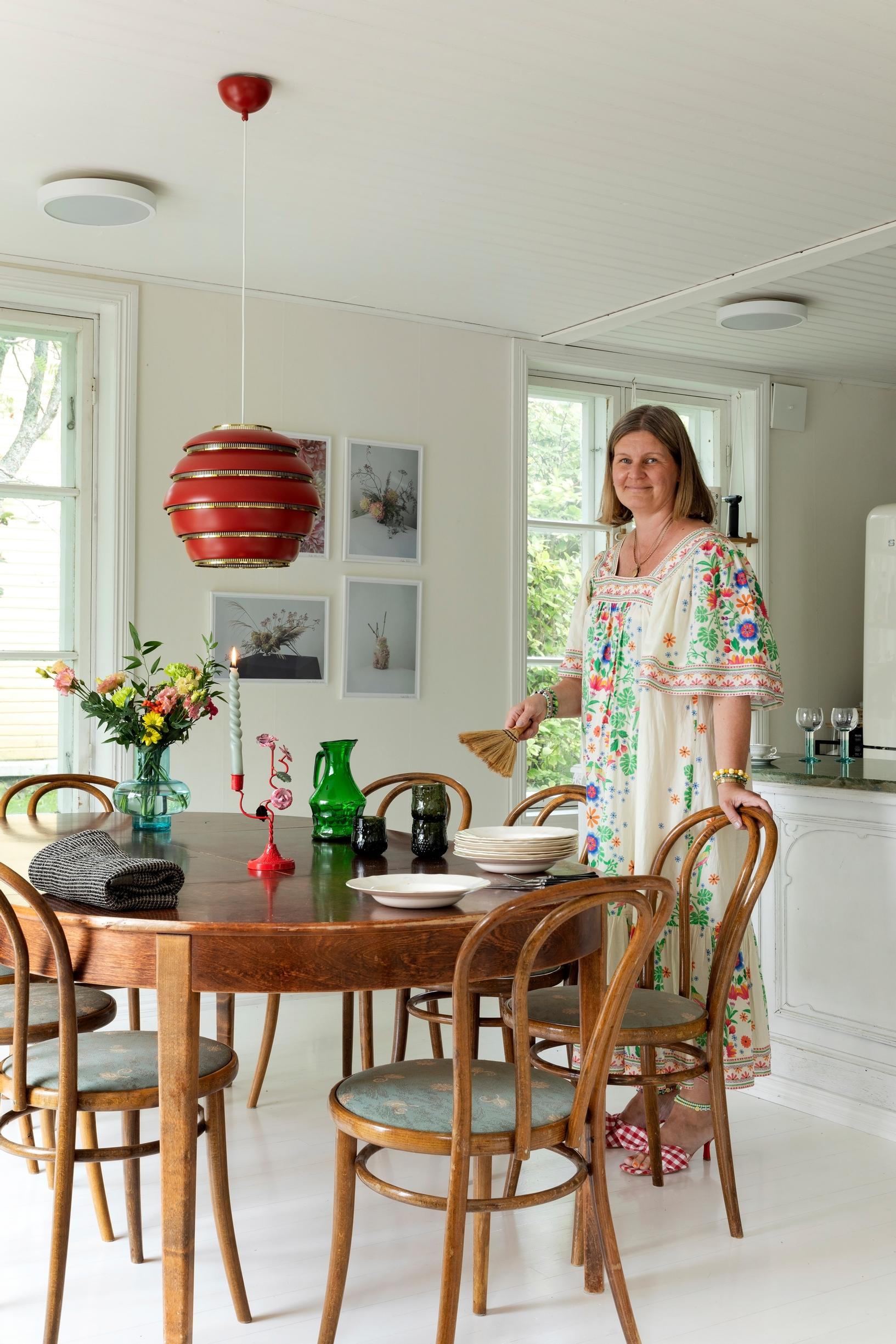
Petra, what were your needs for the cottage?
We wanted a vacation home that would be suitable for year-round use with modern comforts. Our plan was to get to know the house at a relaxed pace by spending time there first, and then figure out how we’d renovate. But on our very first trip, we got so excited that we stripped the interior walls down to the bare surfaces.

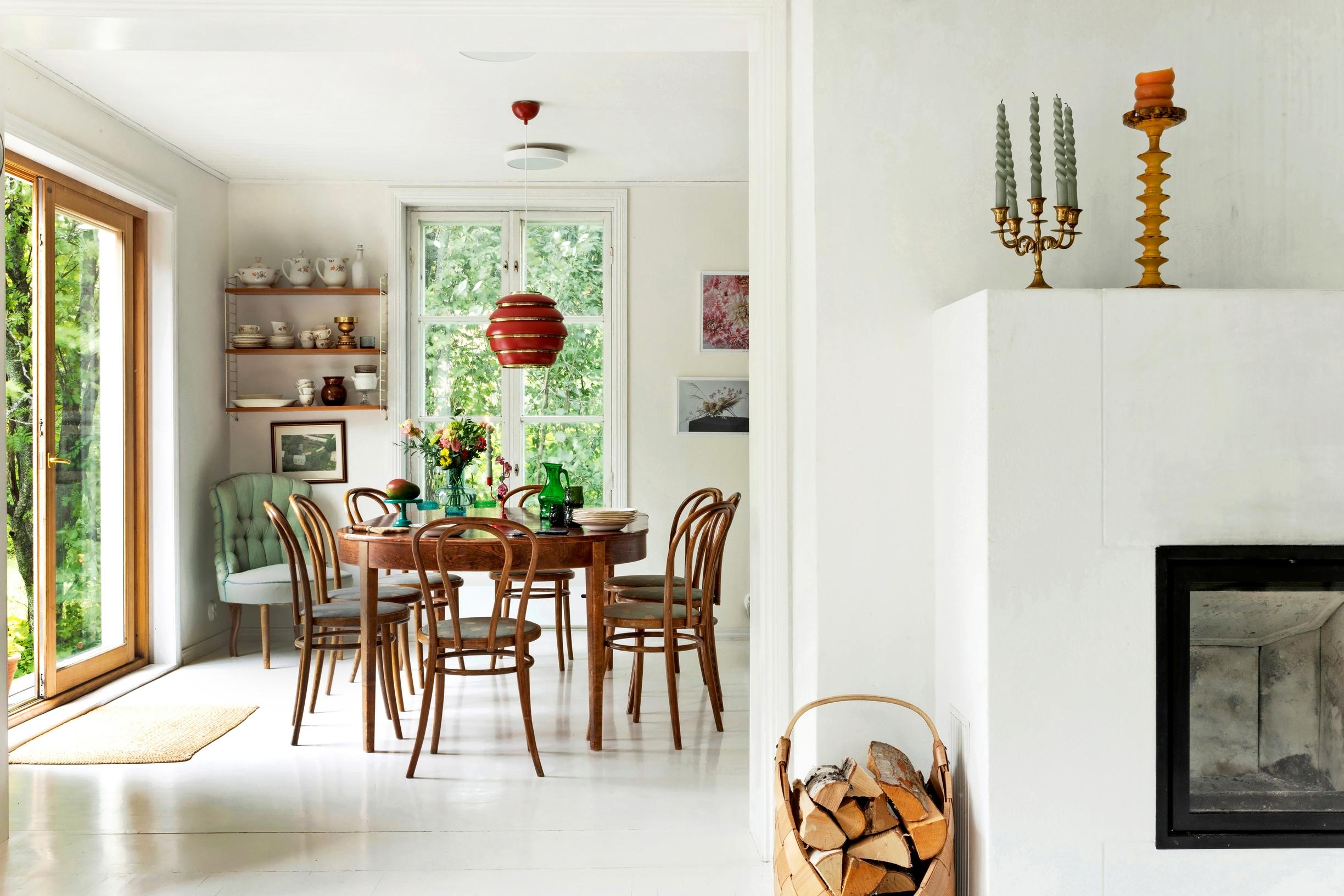

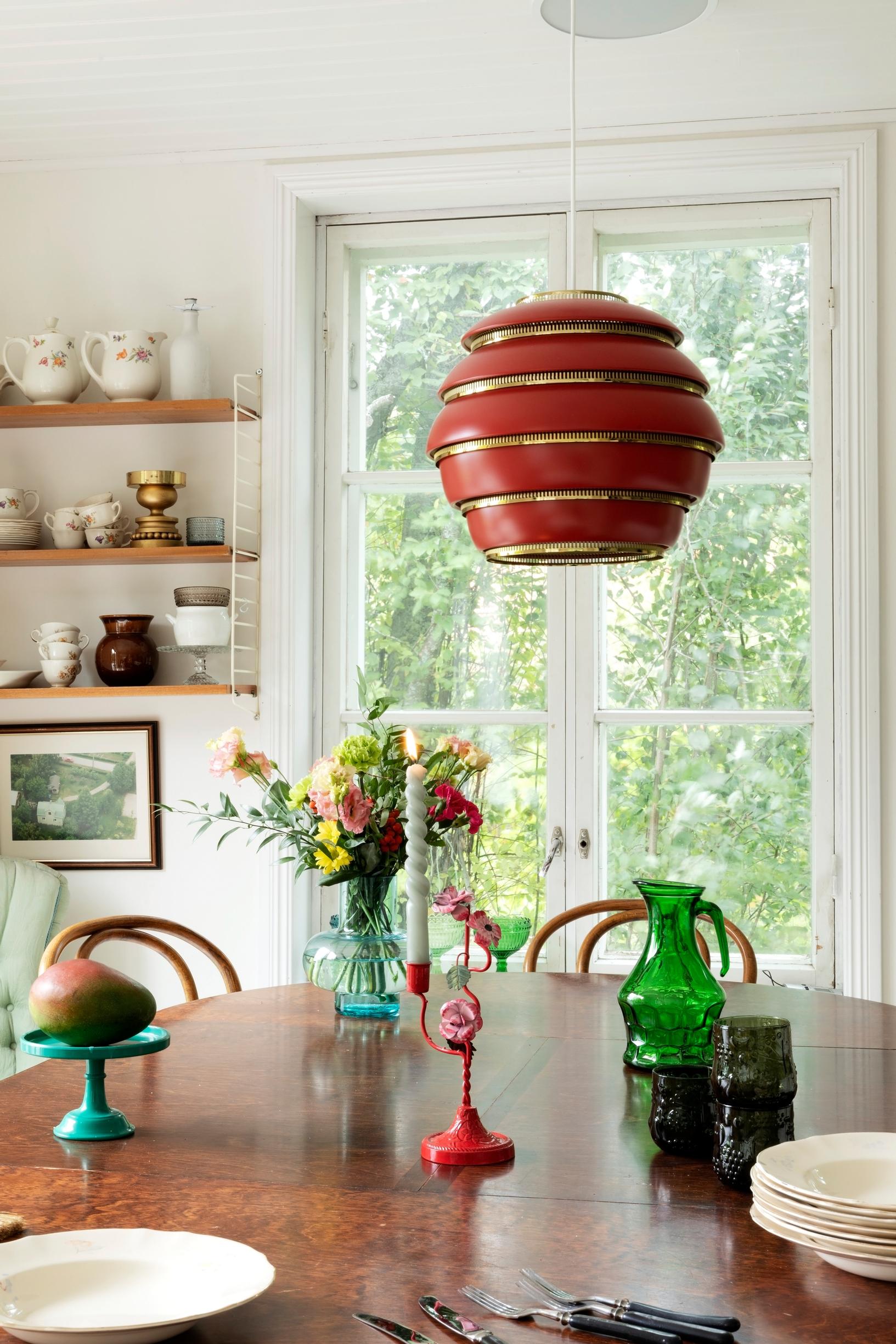
Vesa, what is it like to renovate an old building?
It’s a mix of joy and realism when you’re facing a big project. In Puumala, our stress levels drop the same way they did when we spent a year in Lapland. Renovating and caring for the cottage have been mostly pleasant counterweights to office work. Working with my hands and seeing tangible results is rewarding.
I renovated the cottage using traditional building materials, with help from a local plumber and electrician. We got design assistance from architect Satu Ratinen, who sketched out the cottage’s layout and drew up the plans needed for the permit.
Vesa scoured online marketplace Tori for matching old, solid-wood built-ins, then modified them and crafted any missing parts.

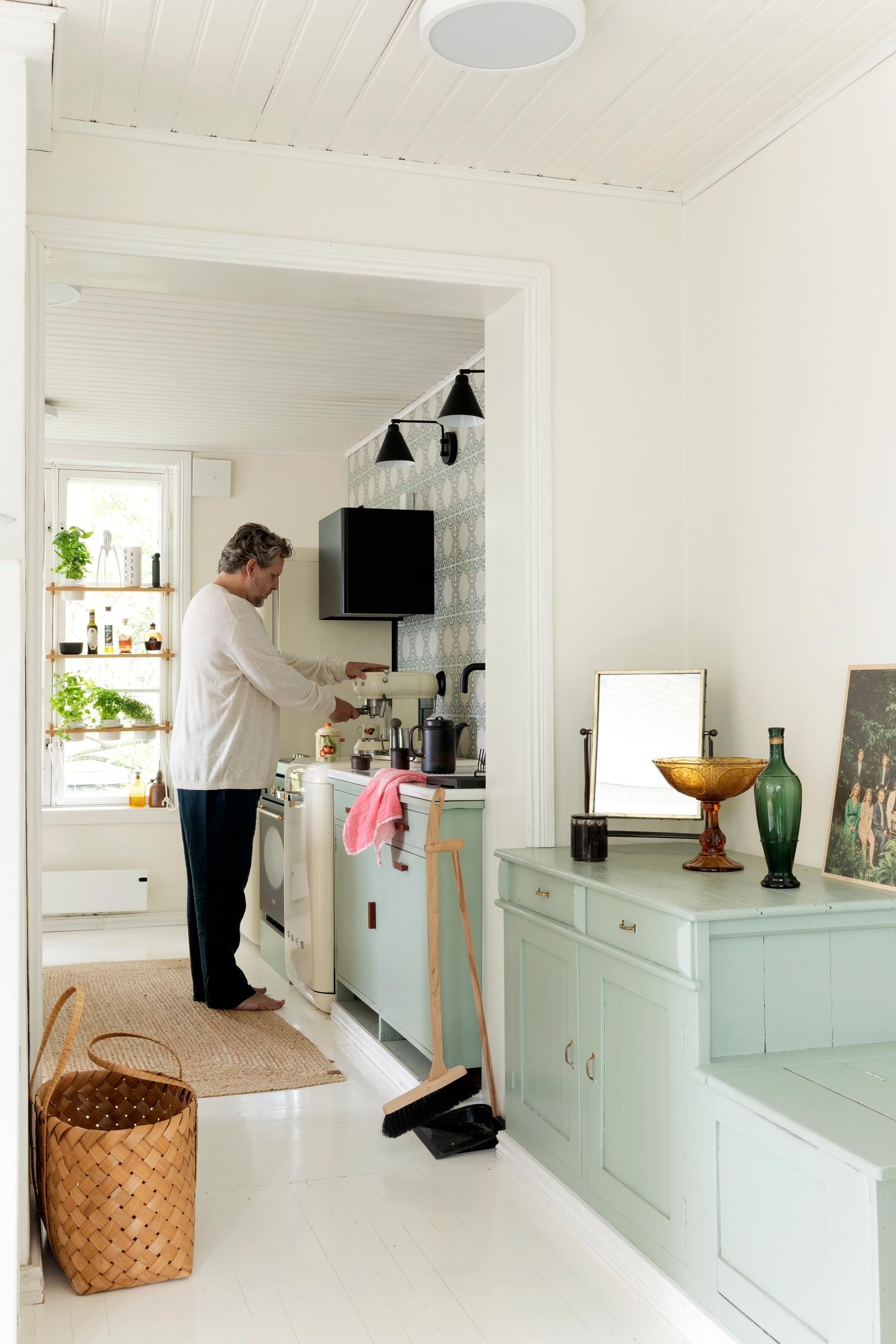

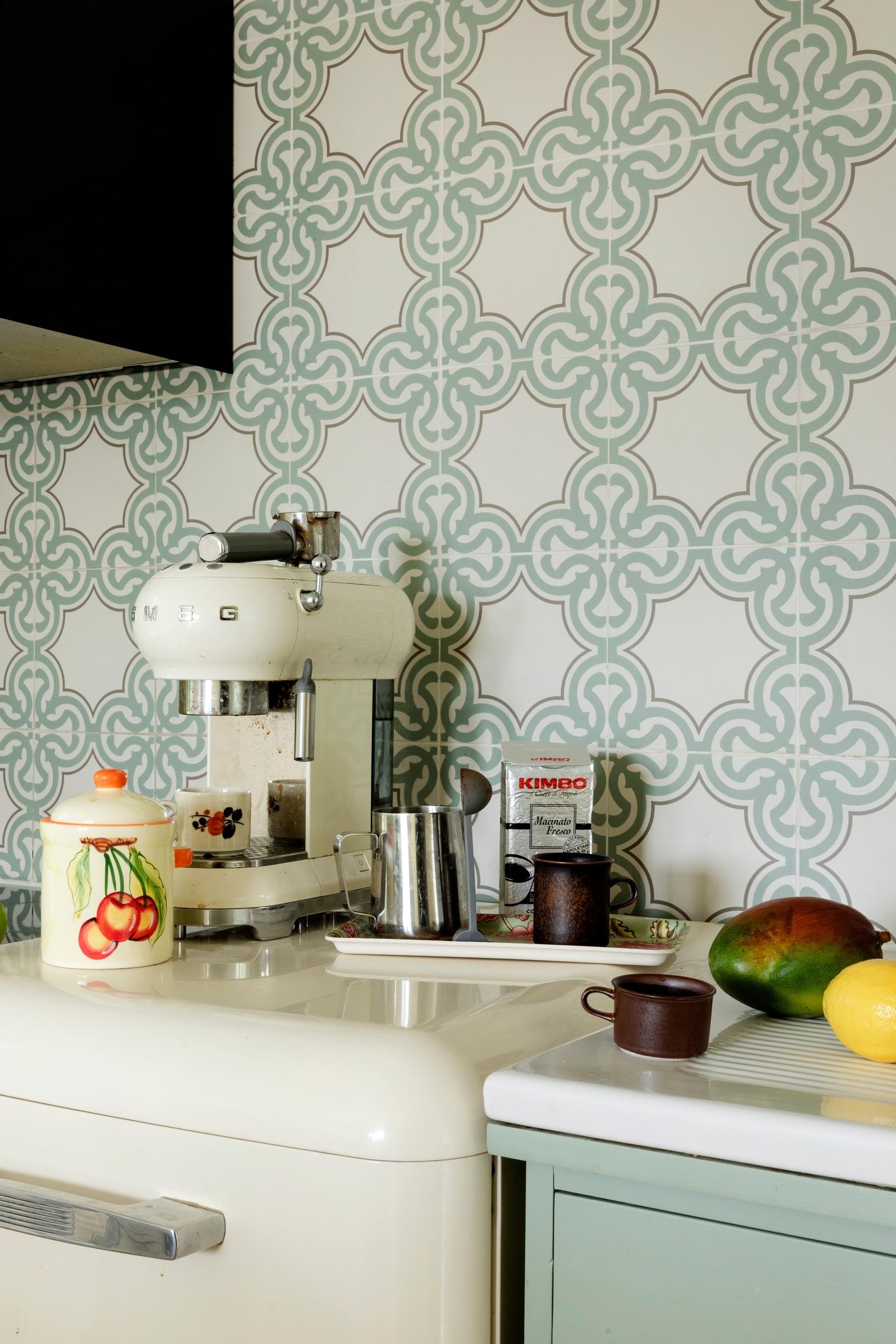

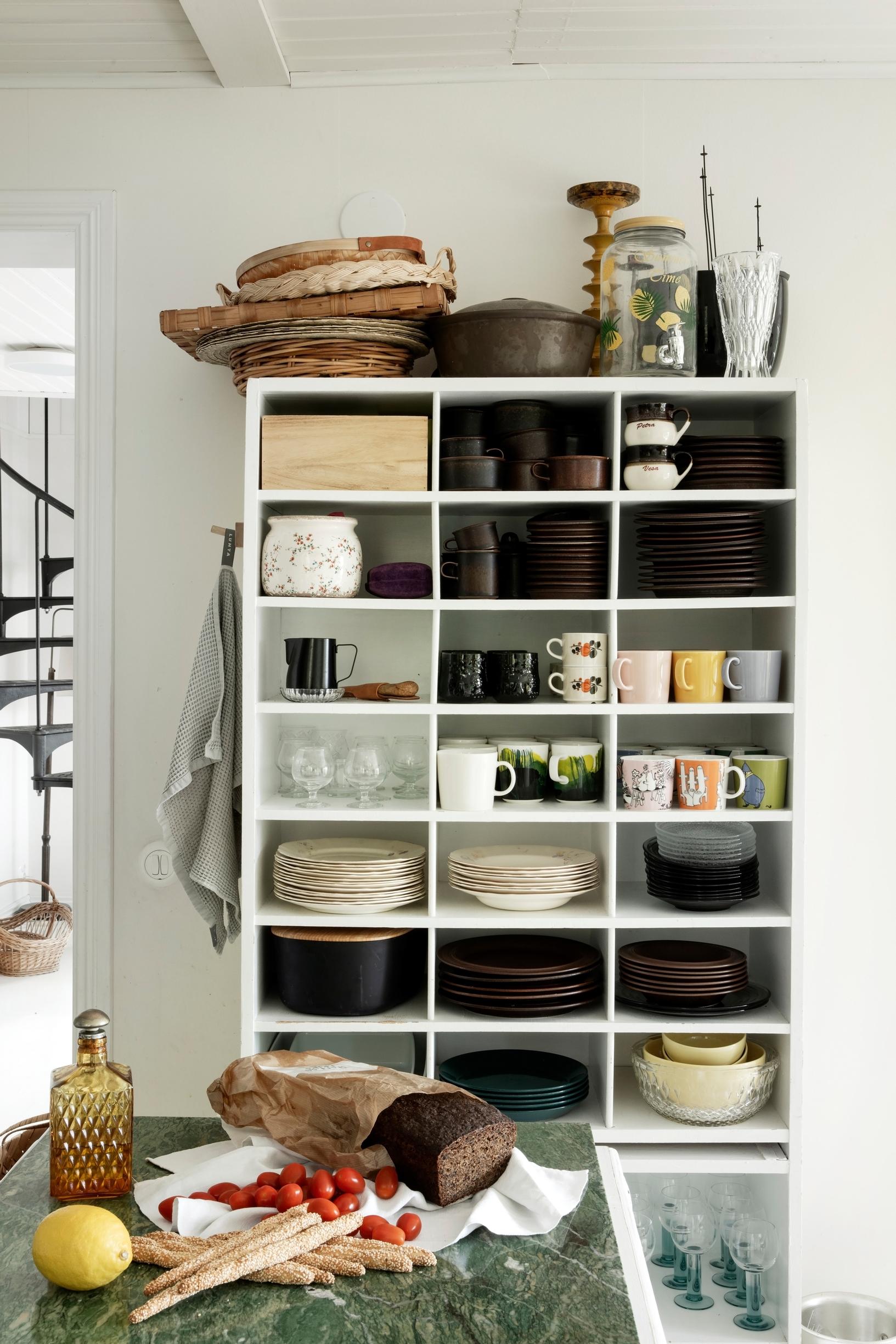
Satu Ratinen, what was it like from an architect’s perspective to renovate this old house into a vacation home?
Old houses teach us lessons that can be applied to designing new ones. The Kunnaris’ cottage is a wonderful example of slow design thinking. They’ve repaired existing structures, taken time to decide what to do, and used reclaimed parts and natural materials.
What’s admirable about Petra and Vesa’s style is how boldly and unexpectedly they combine different elements. Sometimes, renovation projects rigidly seek out the building’s “original state” to restore it exactly. In this case, the starting point was approached with more freedom, yet the old-house feel is fully preserved.
The original condition, with its playful and relaxed character, encouraged freely mixing and modifying things. For instance, the couple wanted to change some of the windows to more old-fashioned grid windows, but they also added one modern sliding door.
The best parts of the living room are the lake view, the brightness, and the calm. “Our velvet sofa feels like being embraced by the forest.”

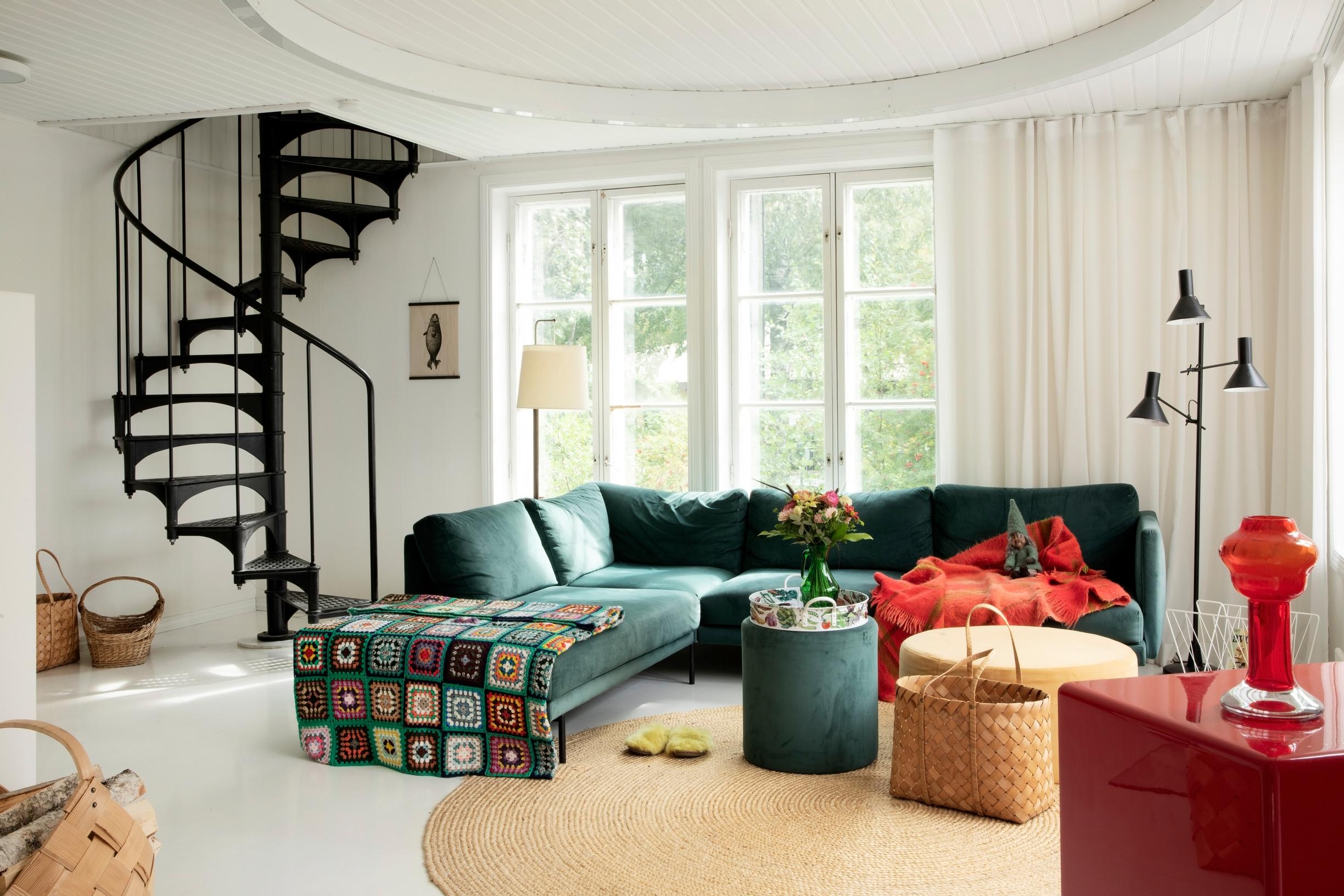
How do you feel about the layers from different decades?
Petra: Vesa is extremely skilled at finding secondhand treasures in the wondrous world of the internet. I like it when the decor includes pieces from different eras, as long as they complement one another. That creates a compelling personal style.
Vesa: We only bought the sofa, beds, and stereo system new. Everything else is either secondhand or leftover from what came with the house. I found the kitchen island at an antique auction in Stockholm, and got the spiral staircase and built-in kitchen cabinets on the Tori marketplace.

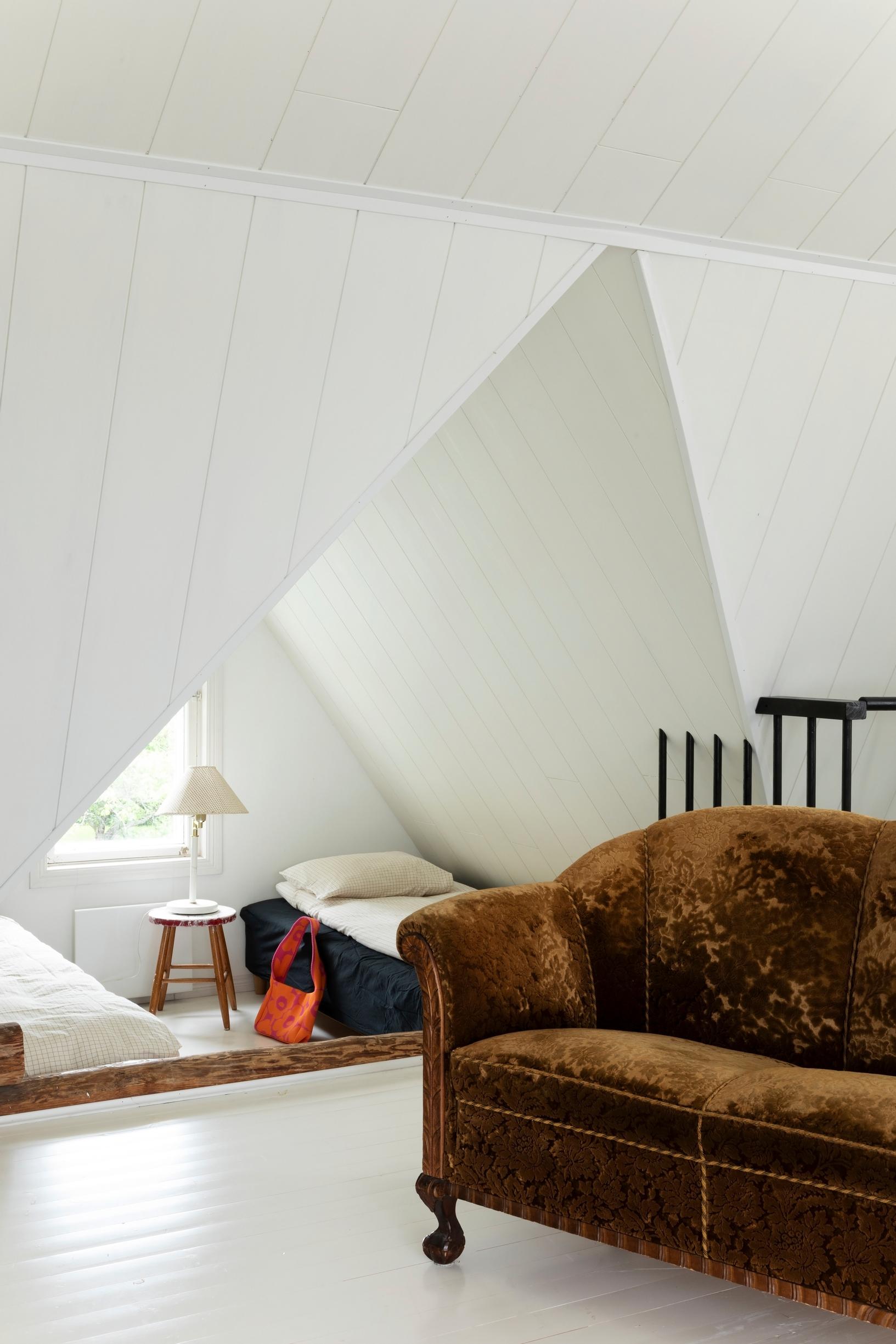

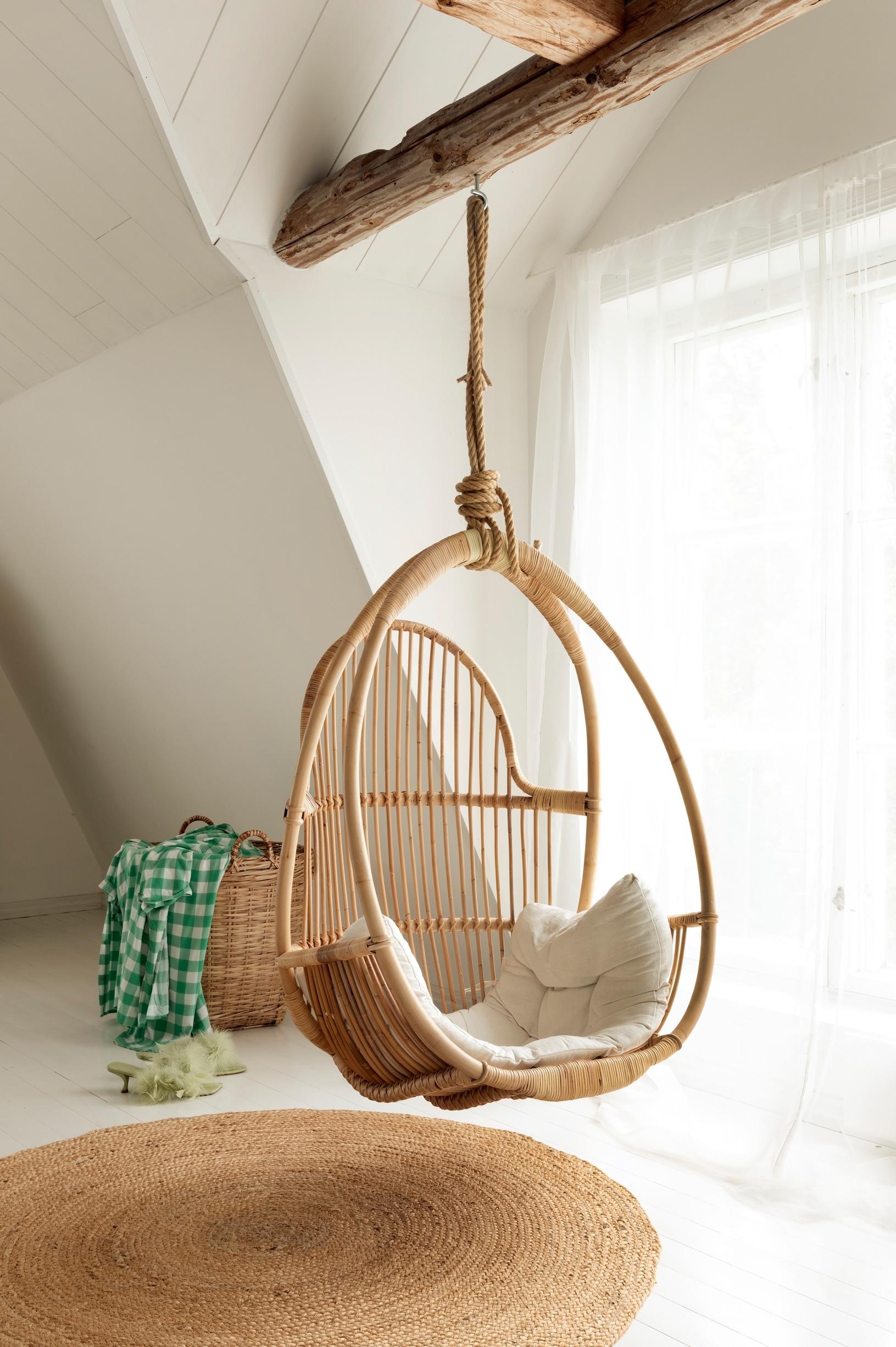

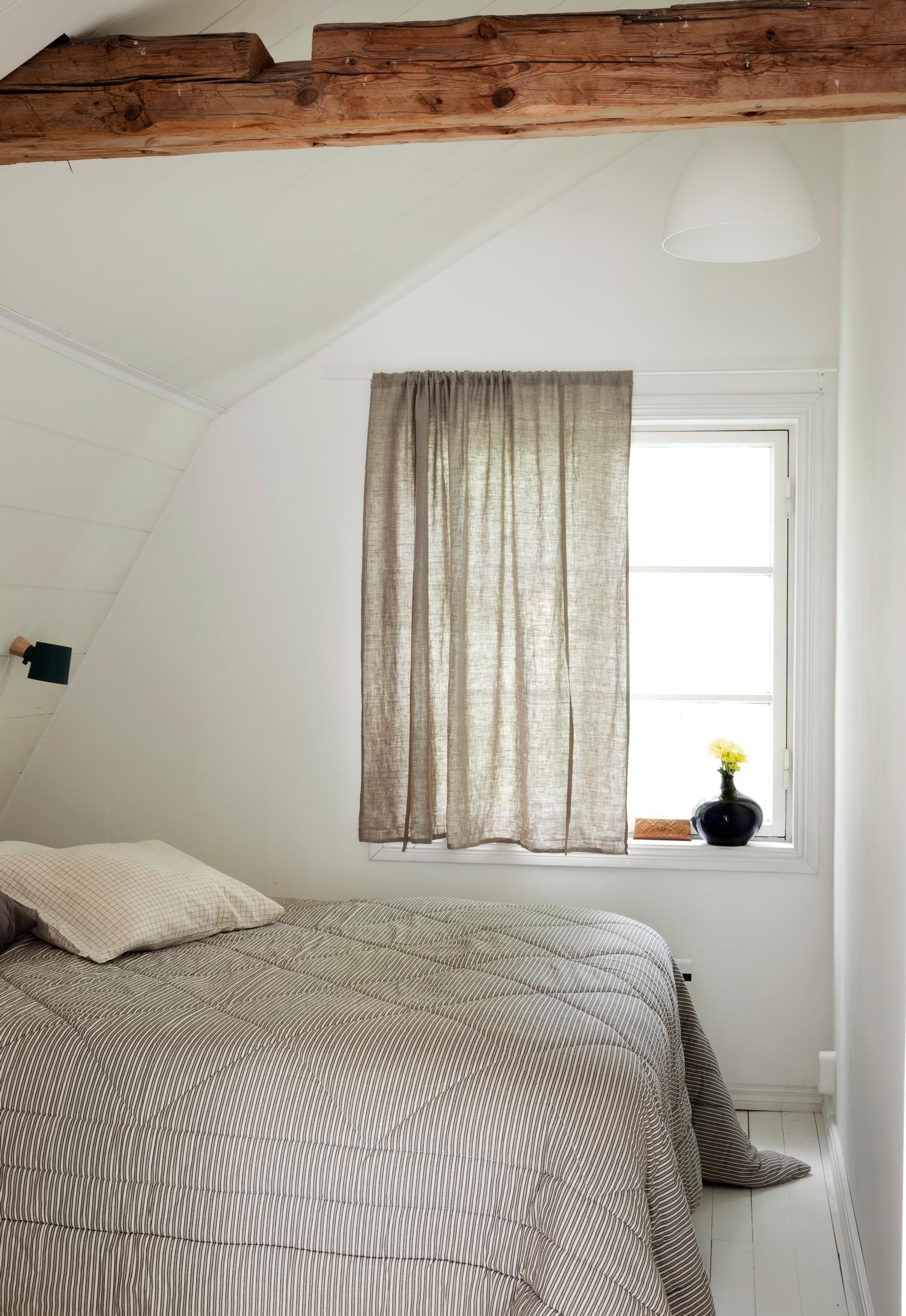
What defines the cottage’s interior style?
Vesa: We both value aesthetics, and the look of the interior is important to us. After many years together, my wife and I have realized our tastes align quite well. When I was at the cottage alone, I picked materials and colors on my own and only showed Petra afterward.
Petra: The house’s exterior was already green, right up to the roof, which inspired us to bring green inside as well. Beauty, atmosphere, and comfort guide the cottage’s interior. The white interior surfaces offer an ideal backdrop for playing with color.

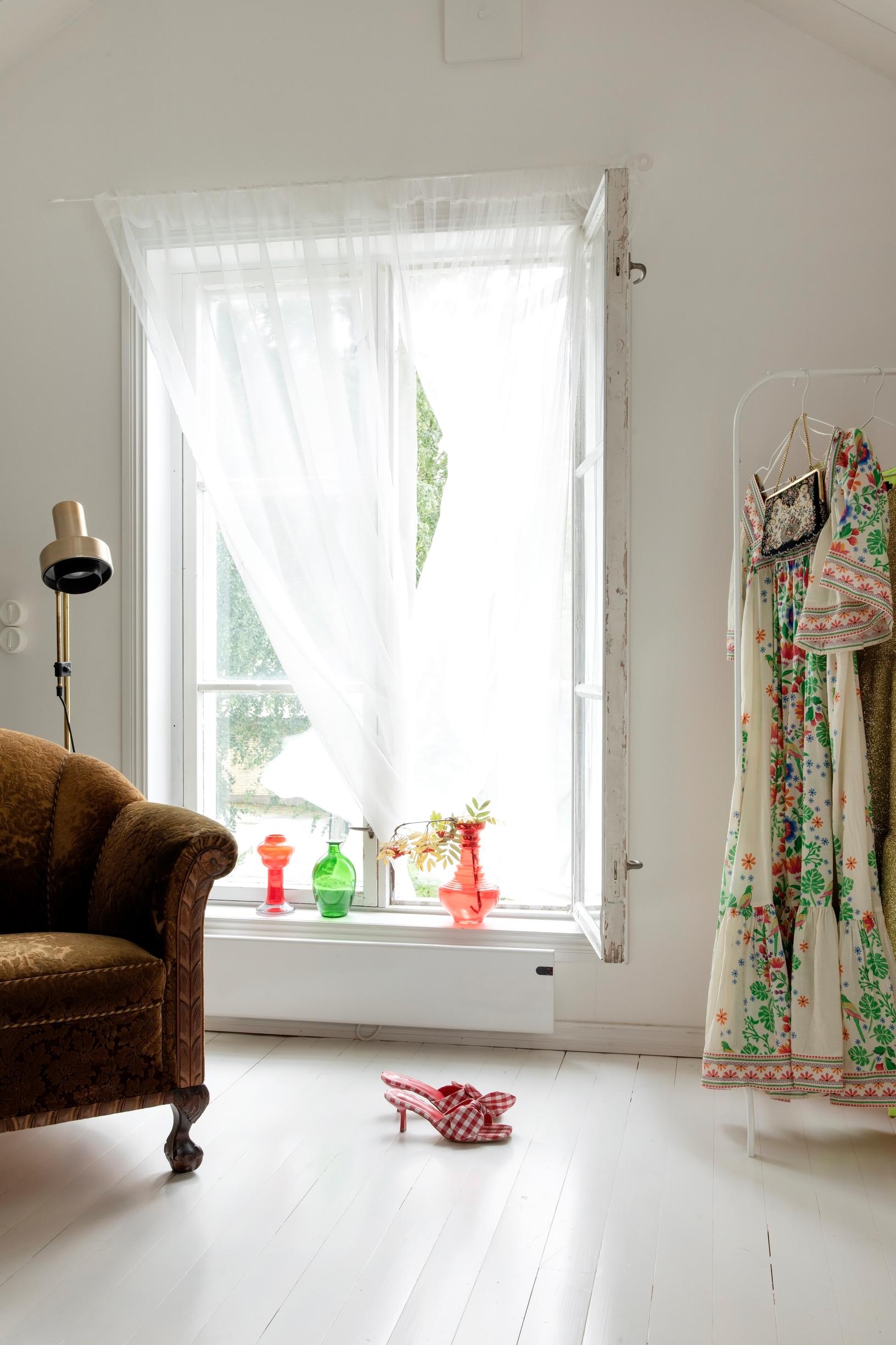

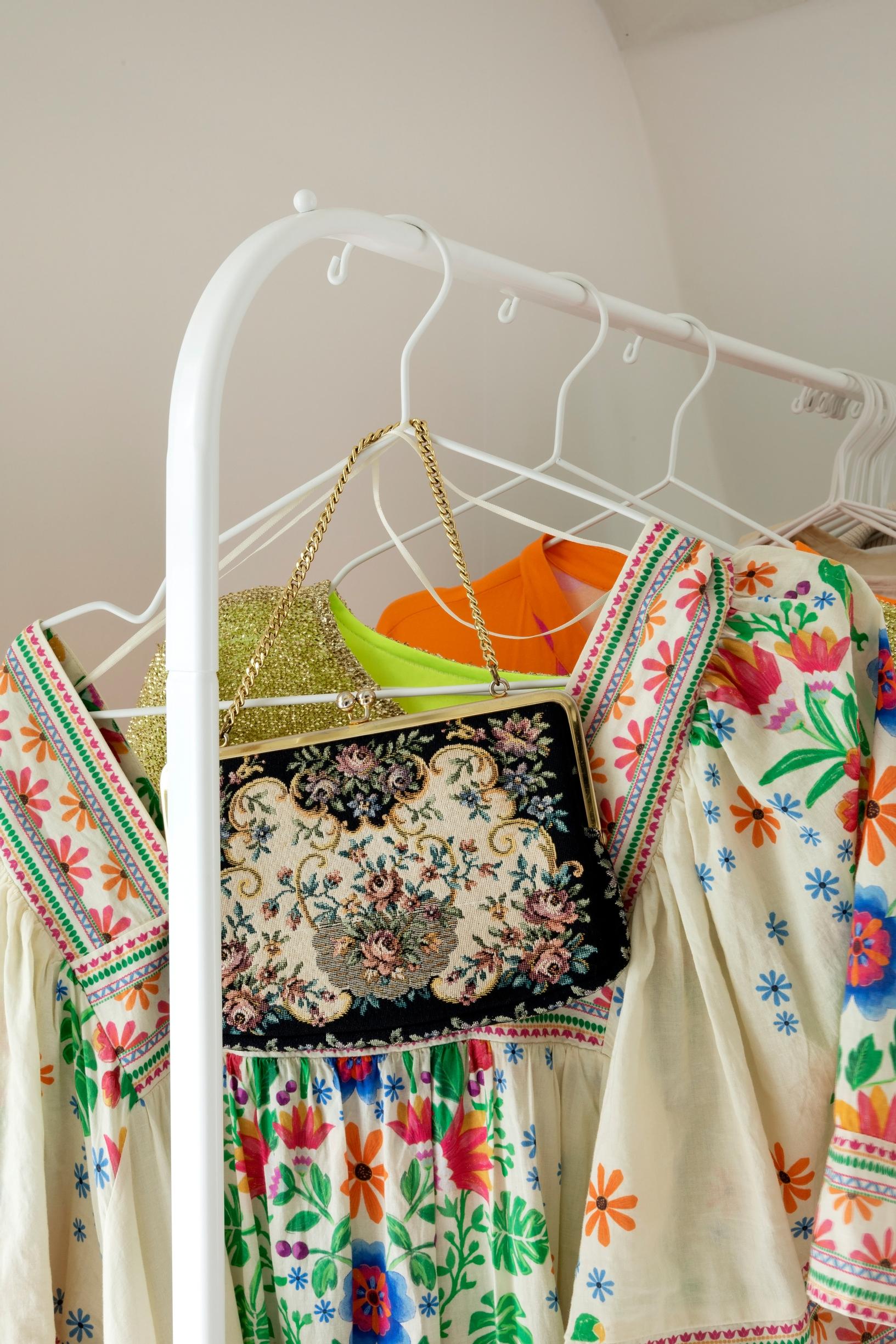
What is a typical Sunday like at your cottage?
Petra: We sleep late. We eat breakfast on the terrace, basking in the sun, and linger in the calm of a Sunday morning. Around lunchtime, we all hop in the boat and head to a nearby restaurant.
“We hope our near-future dreams of living in multiple locations—Italy, Lapland, and Puumala—will come true.”

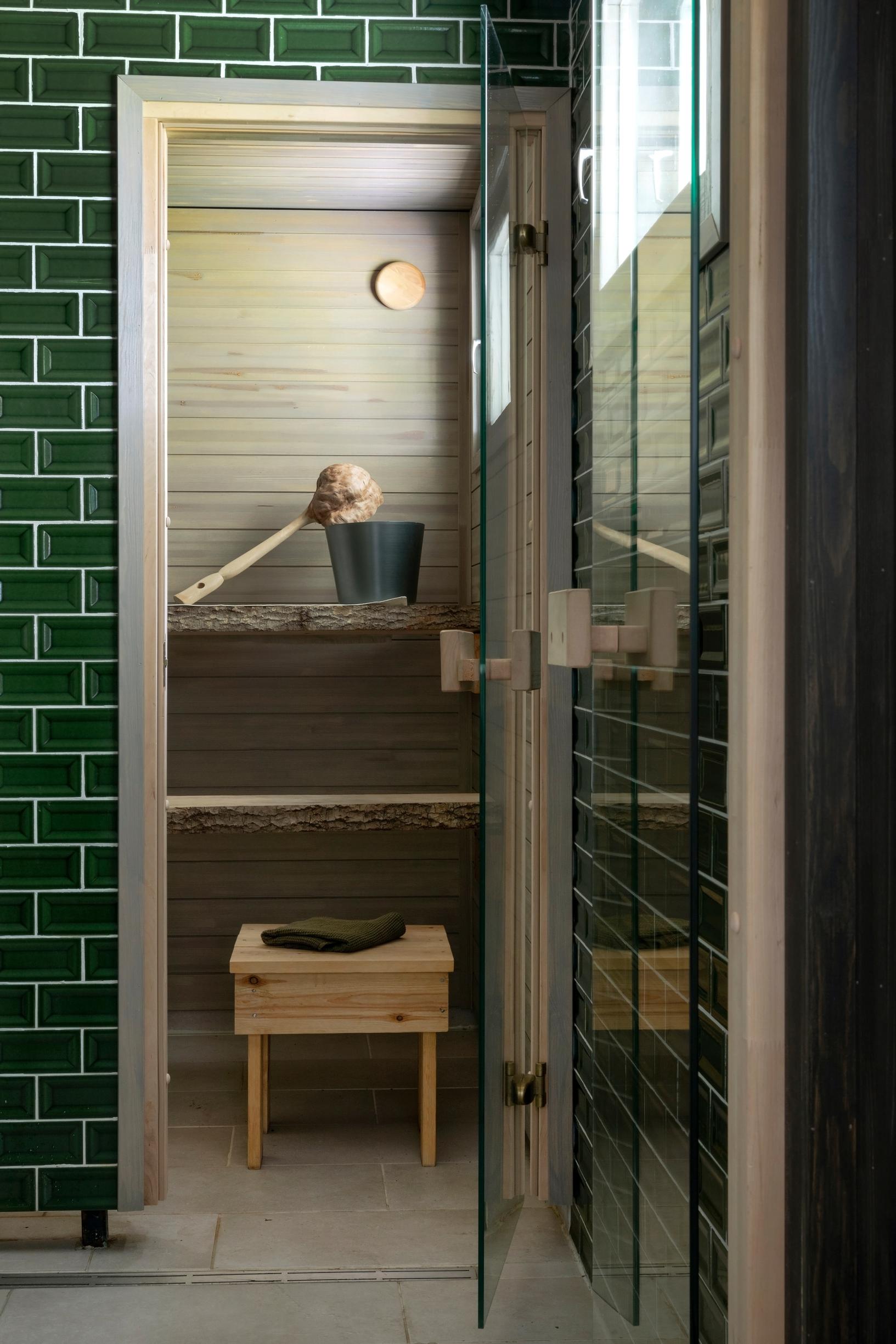
What have you realized about living and life?
Petra and Vesa: Life is short. If you dream of something, do it right away. In a sense, we’ve already been doing this—living in Italy when the kids were little and spending the year before last in Lapland. We hope to stay energetic and healthy as we get older, with the same sparkle and warmth in our eyes. We also hope our near-future plans to live in multiple places—Italy, Lapland, and Puumala—will come true.

